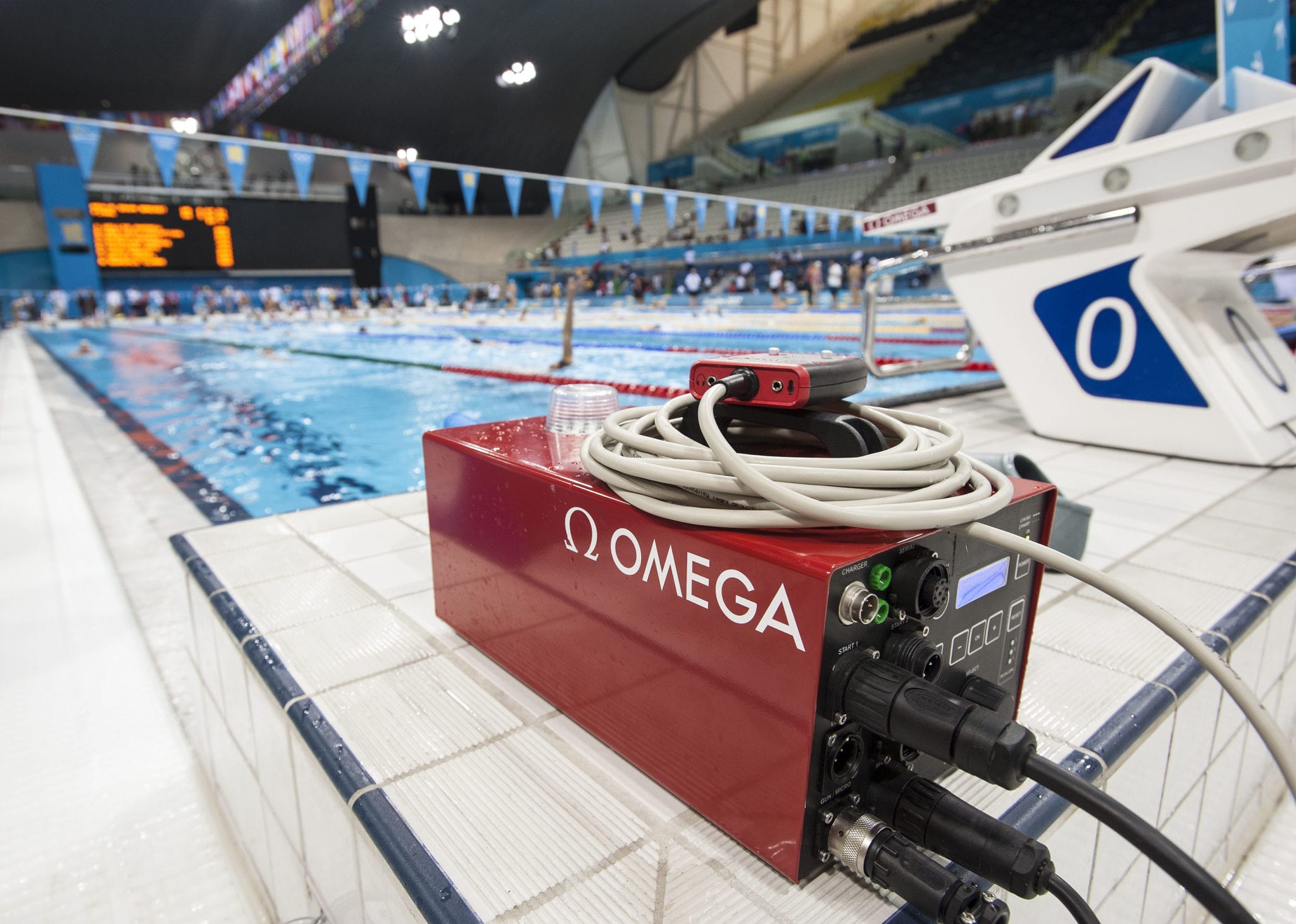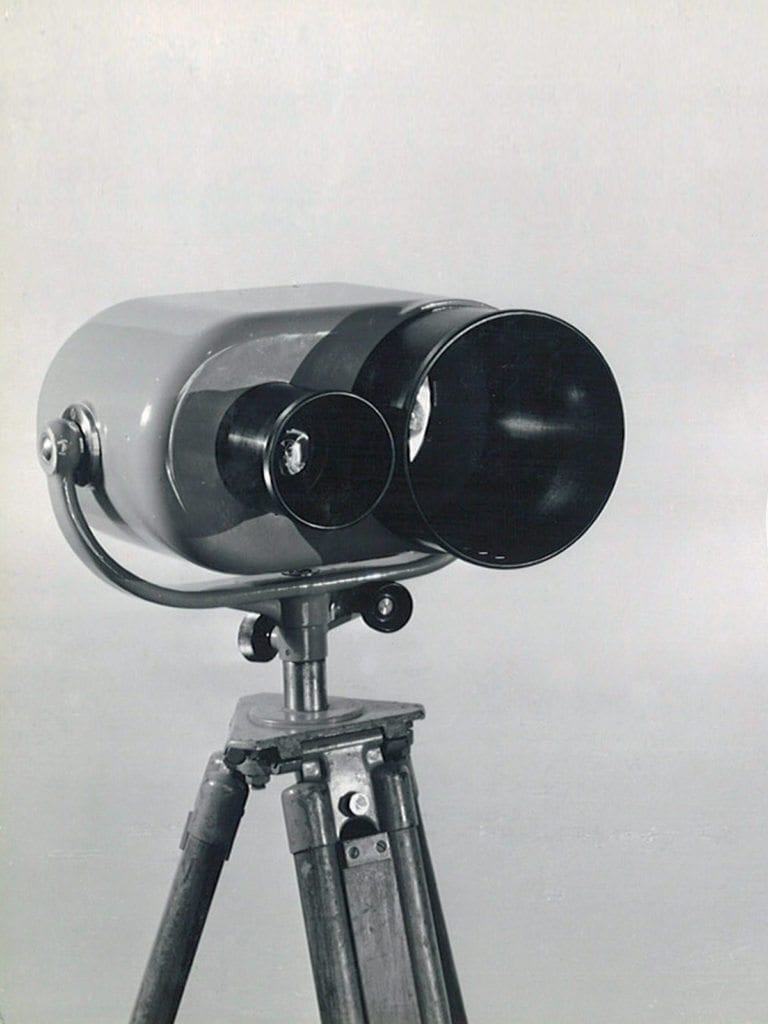

The History of OMEGA’s Olympic Timer Technology
OMEGA’s work as an official timekeeper of sporting events spans over a century. It began in 1905 when they started serving as the official timekeeper of a number of sporting events across Switzerland. Roughly three decades later, they secured one of their most important opportunities in this field. OMEGA’s relationship with the Olympics began in 1932. Learn about some of the historic innovations presented by the Official Timekeeper of the Olympic Games.


When OMEGA began its relationship with the Olympic Games at the summer events in Los Angeles, California, it made history. It was the first time the Olympic Games entrusted a single brand to be the official timekeeper. Here, they used 30 chronometer-certified mechanical chronographs to record events. This OMEGA Olympic stopwatch was pretty impressive for the era. They provided timekeeping precise to a fifth of a second. In addition, they came equipped with split-seconds capabilities for timing two events at once. OMEGA again used mechanical chronographs to record times at the 1936 Olympics. The 1940 and 1944 Olympics, due to be held in Tokyo and London, were canceled due to World War II. During that hiatus, OMEGA began refining its work in the field of timekeeping.
OMEGA’s mechanical chronographs recorded accurate time. However, they had one weakness. Because a timekeeper had to manually operate them, there was a risk that a slow button push could result in an inaccurate time. By 1948, they had developed the technology to replace human timers with automated ones. They did so using a proprietary photoelectric cell technology, first called the cellular photoelectric eye and later the “Magic Eye.” The technology debuted at the winter Olympics in St. Moritz, Switzerland, and later at the summer Olympics in London, England. The equipment consisted of a timing device controlled by a starting gun and a reflective mirror. The gun would trigger the OMEGA timer. Then, when the runner at the finish line interrupted the light beam, the device recorded the time.
At the Olympic Games in Helsinki, Finland, OMEGA debuted the OMEGA Time Recorder. This all-new quartz clock not only timed the events but also printed out the results. This breakthrough technology allowed official Olympic times to be accurate to 1/100th of a second. As a result, the company received the prestigious Croix du Mérite Olympique award for their efforts.
1956 – The Swim-O-Matic at the Melbourne Summer Olympics
The original timing method for Olympic swimming consisted of three judges allocated to a swim lane to track the swimmers’ finishing times. In 1956, OMEGA started work on the Swim-O-Matic. This automatic timing system used the force of a swimmer touching the ends of the swimming pool to record times without the need for a timekeeper. OMEGA used the first iteration of the device, the Swim-Eight-O-Matic, at the 1956 Olympics in Melbourne, Australia. Over the next two decades, OMEGA continually improved the Swim-O-Matic.
The Winter Games in Innsbruck, Austria, were the first fully electronic Olympics, televised in real time thanks to the Omegascope. As people watched the sporting events on TV, they also witnessed athletes’ official times, completely live.
By the 1968 Olympics in Mexico City, OMEGA had built upon the Swim-O-Matic. They installed the improved touch pads in the pool so the force of a swimmer’s hand would stop the clock. Eventually, by the 1980 Olympic Games in Moscow, OMEGA would reduce the weight of these Olympic timer devices from the original 150kg to just 1.2kg.
During the speed skating events at the Albertville Winter Olympics in France, OMEGA’s introduced the Scan-O-Vision. This photo-finish system was able to measure the competitors’ times to 1/1000th of a second or, a millisecond.
At the Winter Games in Vancouver, Canada, OMEGA replaced the iconic starting pistol with the Electronic Start System. The mechanism consists of a red flashgun and a sound generator box. Activating the trigger of the new futuristic flashgun initiates three separate, yet simultaneous, actions. It emits a sound, a light flashes, and the timing device starts, all at the same time.
At the Summer Games in London, England, OMEGA unveiled two new pieces of technology. The first was the Quantum Timer, accurate to 1/1,000,000th of a second, or microsecond. In addition, they debuted pressure-sensitive starting blocks. These use hidden sensors to detect false starts. Ultimately, they help to ensure no athlete gains an unfair advantage at the beginning of a race.
At the Rio 2016 Olympics, OMEGA introduced their Scan-O-Vision Myria photo-finish camera. This incredible piece of technology can take up to 10,000 digital images every second.
OMEGA’s work with the Olympic Games has also become synonymous with special edition timepieces commemorating the events. The history of these collectible watches began at the 1956 Summer Games in Melbourne. That year, they launched two, 18-karat gold variations of the Seamaster. One version showcased the Olympic rings and the other featured an applied XVI on the dial.
OMEGA continued the tradition with a special edition iteration of the Chonostop for the 1968 Olympics in Mexico City. What distinguished the Olympic variation from the original 1966 models was the addition of a date function. In turn, the model also featured a new movement: the Caliber 920. OMEGA issued the next Olympic model at the 1976 Winter Games in Montreal. For the occasion, they debuted their first LCD display watch, which garnered the nickname, “the scoreboard.”
By 1992, OMEGA began establishing the Seamaster in association with the Olympic Games. That year, they released two special edition quartz versions of the model for the Summer Games in Barcelona. OMEGA produced one variation in a limited run of 499 pieces. They created the other exclusively for sponsors of the event in just 250 pieces.
In 2006, OMEGA decided to switch things up with a special edition of the Speedmaster for the Winter Games. The model features two standout characteristics. It comes equipped with a pulsometer as well as Olympic rings on the chronograph seconds hand. OMEGA returned to special variations of the Seamaster, this time the Aqua Terra, at the Beijing Olympics in 2008. They continued with the Seamaster trend at the Winter Games in Vancouver in 2010. Here, the special edition iteration gave a nod to the Canadian flag with a white dial and red bezel.
For the 2012 Olympic Games in London, OMEGA harked back to 1948, the year London first served as host. The result was a vintage-inspired Seamaster with a 39mm construction and applied indices in a limited run of 1948 units. For Rio de Janeiro in 2016, OMEGA upped the ante with three special edition models. These included two colorful versions of the Seamaster and a Speedmaster whose registers feature the colors of Olympic medals.
This finally brings us to the Seamaster USA Winter Olympic Edition for the Pyeongchang Winter Olympics. Once again, OMEGA gives us a variation of the Aqua Terra. The model is a METAS certified chronometer powered by the brand’s Master Chronometer Caliber 8900. It features a stainless steel case with modern, oversized 41mm proportions. In addition, it comes equipped with a nylon strap in classic red, white, and blue. This perfectly complements the handsome blue teak dial, which showcases a date window at the six-o’clock position.
OMEGA carries on their tradition of special edition watches for the Tokyo Summer Olympic Games in 2020. So far, they’ve teased a whopping four models. These include two variations of the Speedmaster as well as iterations of the Seamaster Aqua Terra and Seamaster Planet Ocean.
Images ©: Header, 1-4; OMEGA.
Protect What You Love With Hodinkee Insurance We're here to help avoid a potential heartache.…
Watching Movies: Adam Driver Takes Over The Gucci Family Empire Wearing A JLC Reverso in…
Second Opinions: The Tudor Black Bay Fifty-Eight Is Not A Submariner Alternative It's its own…
Your Watch Just Tripled In Value – Now What? Auction season is around the corner.…
A Week On The Wrist: The 40mm TAG Heuer Aquaracer Could Be Your Only Watch…
Five Critical Things To Do Before Buying A Watch Online Originally published by Hodinkee, March…